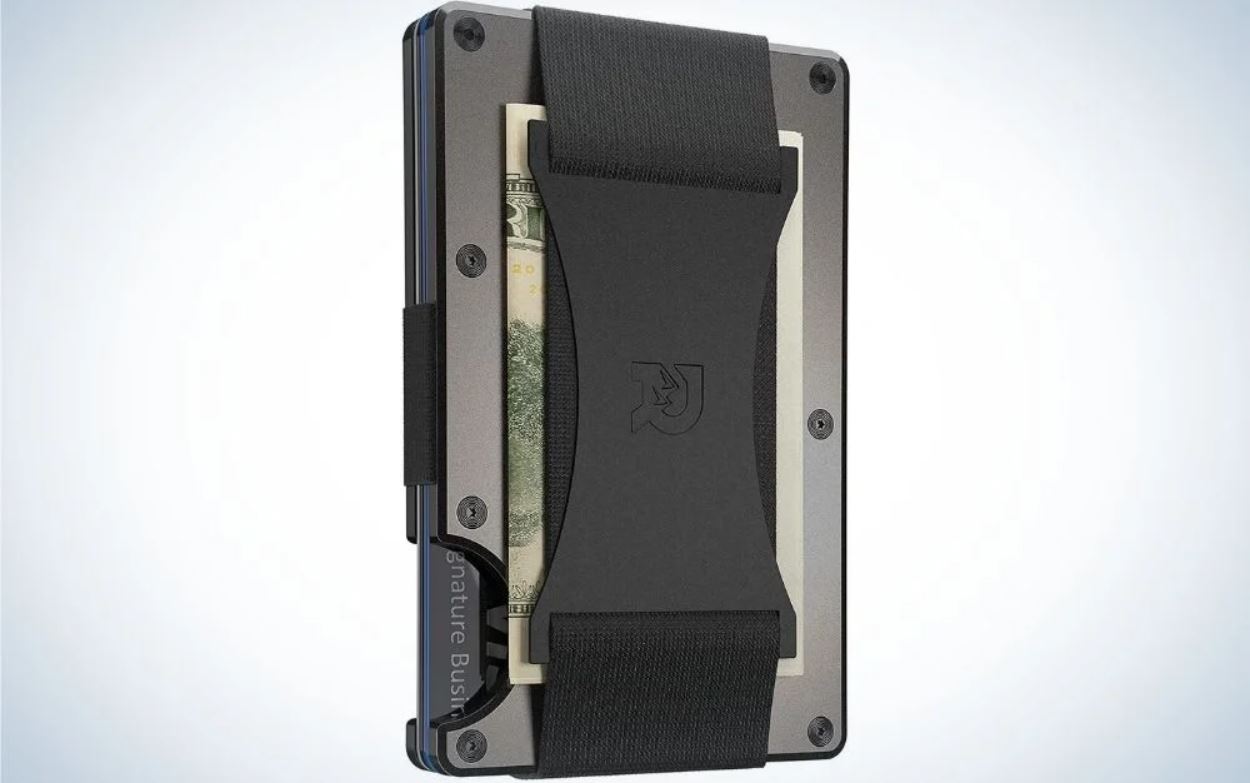Introduction
Radio Frequency Identification (RFID) is a revolutionary technology that allows for the wireless identification and tracking of objects using radio waves. It has emerged as a key enabler in various industries, providing real-time, accurate, and efficient data capture and management. From retail and logistics to healthcare and manufacturing, RFID technology offers a wide range of applications that improve operational efficiency and enhance customer experiences.
RFID technology relies on the use of small electronic devices called RFID tags or transponders, which are attached to or embedded within objects. These tags contain unique identification data that can be read and transmitted by RFID readers using radio frequency signals. Unlike traditional barcode systems, RFID does not require line-of-sight or manual scanning, enabling quick and automated data collection.
The components of an RFID system include RFID tags, RFID readers, RFID antennas, and RFID middleware. RFID tags are small, battery-powered or passive devices that store and transmit data. RFID readers, also known as interrogators, are responsible for retrieving information from the tags. RFID antennas capture the radio frequency signals and transmit them between the tags and readers. RFID middleware serves as the bridge between the RFID system and the enterprise software applications, processing and managing the captured data.
Understanding how RFID works can help demystify its capabilities and applications. The technology operates on the principle of electromagnetic coupling, allowing for the wireless transfer of data between an RFID reader and tag. Communication between the reader and tag occurs through radio waves, which are emitted and received by the respective components.
In the next sections, we will delve deeper into the mechanisms of RFID communication and explore the different types of RFID technology, including passive and active RFID. We will also discuss the benefits and common applications of RFID, as well as the potential challenges that organizations may face when implementing the technology.
What is RFID?
RFID, short for Radio Frequency Identification, is a technology that allows for the wireless identification and tracking of objects using radio waves. It uses small electronic devices called RFID tags or transponders, which contain unique identification data that can be read and transmitted by RFID readers. Unlike traditional barcode systems, RFID does not require line-of-sight or manual scanning, enabling quick and automated data capture.
RFID technology consists of three main components: RFID tags, RFID readers, and RFID antennas. RFID tags are attached to or embedded within objects and come in various forms, including labels, cards, or microchips. They can be either passive, meaning they rely on the energy emitted by the RFID reader to operate, or active, which have their own internal power source.
RFID readers, also known as interrogators, are responsible for retrieving information from the RFID tags. They emit radio frequency signals that power the passive tags and capture the data stored within them. The readers then transmit this data to a central computer system or RFID middleware, which processes and manages the captured information.
RFID antennas play a crucial role in facilitating the communication between the RFID readers and tags. They capture the radio frequency signals emitted by the readers and transmit them to the tags, and vice versa. The antennas can be integrated into the readers or implemented as separate components, depending on the specific application requirements.
RFID technology offers numerous benefits across various industries. It provides real-time, accurate, and efficient data capture, reducing errors and improving inventory management. RFID enables seamless and automated tracking of assets, products, and personnel, enhancing security and supply chain visibility. It also enhances customer experiences by enabling personalized interactions and streamlined checkout processes.
Common applications of RFID technology can be found in retail, logistics, healthcare, manufacturing, and many other sectors. In retail, RFID is used for inventory management, theft prevention, and enhanced customer experiences. In logistics, RFID enables efficient tracking and tracing of shipments, leading to improved supply chain efficiency. Healthcare facilities utilize RFID for patient identification, asset tracking, and medication management. In manufacturing, RFID is employed for process automation, quality control, and asset tracking.
While RFID technology offers significant benefits, there are potential challenges that organizations may face during implementation. These challenges include the cost of RFID equipment, integration with existing systems, privacy concerns, and the need for standardized protocols. However, with proper planning and implementation strategies, these challenges can be overcome, allowing organizations to leverage the full potential of RFID technology.
Components of an RFID System
An RFID (Radio Frequency Identification) system consists of several key components that work together to enable the identification and tracking of objects using radio waves. These components include RFID tags, RFID readers, RFID antennas, and RFID middleware.
RFID tags, also known as transponders, are small electronic devices that contain a unique identification code or data. These tags come in various forms, such as labels, cards, or even implantable microchips. Some RFID tags are passive, meaning they do not have their own power source and rely on the energy emitted by the RFID reader to operate. Other tags are active, which means they have their own internal power source, allowing for greater read ranges and data storage capabilities.
RFID readers, also referred to as interrogators, are the devices that communicate with the RFID tags. They emit and receive radio frequency signals to exchange data with the tags. The readers can be fixed or handheld, depending on the application requirements. Fixed readers are typically installed in a stationary position, such as at entry points or conveyor belts, to capture data as items pass by. Handheld readers provide mobility and are suitable for inventory management or asset tracking tasks that require mobility.
RFID antennas play a crucial role in facilitating the communication between the RFID readers and tags. These antennas capture and emit radio frequency signals, allowing for the transfer of data between the reader and tag. The antennas can be integrated into the RFID reader or implemented as separate units, depending on the specific application requirements. The design and placement of antennas are important factors that affect the read range and efficiency of the RFID system.
RFID middleware acts as the bridge between the RFID system and the enterprise software applications. It processes and manages the data captured by the RFID readers, allowing for real-time visibility and integration with existing systems. The middleware can perform various functions, such as filtering and aggregating data, performing business logic, and providing interfaces for system integration. It helps organizations leverage the collected RFID data to streamline operations, improve decision-making, and enhance overall efficiency.
By integrating these components effectively, an RFID system enables organizations to automatically identify, track, and manage objects in real-time. This technology offers numerous benefits, such as improved inventory accuracy, enhanced supply chain visibility, increased operational efficiency, and enhanced customer experiences. From retail and logistics to healthcare and manufacturing, RFID systems have become indispensable tools for optimizing processes and gaining a competitive edge in today’s fast-paced business environment.
RFID Tags
RFID (Radio Frequency Identification) tags, also known as transponders, are small electronic devices that play a crucial role in the functioning of an RFID system. These tags contain unique identification codes or data that can be read and transmitted by RFID readers using radio frequency signals. RFID tags come in various forms, such as labels, cards, or even implantable microchips, and are used across a wide range of industries for identification, tracking, and data collection purposes.
There are two main types of RFID tags: passive and active.
Passive RFID tags do not have their own power source and rely on the energy emitted by the RFID reader to operate. These tags are less expensive and smaller in size compared to active RFID tags. When a passive tag comes within the reading range of an RFID reader, it captures the energy from the reader’s radio frequency signals and uses it to power up the tag’s circuitry. The power obtained from the reader is used to transmit the unique identification information stored in the tag’s memory back to the reader. Passive RFID tags have a shorter read range and are commonly used in applications such as inventory management, access control, and asset tracking.
Active RFID tags, on the other hand, have their own internal power source, usually a battery. This power source allows active tags to emit a stronger and continuous signal, resulting in a longer read range compared to passive tags. Active tags can transmit their unique identification information without relying on the energy from an RFID reader. These tags are larger in size and more expensive than passive tags. Active RFID tags are often used in applications where a longer read range is required, such as in tracking high-value assets, monitoring livestock, or managing vehicle fleets.
In addition to their power source, RFID tags can also differ in terms of the frequency they operate at. The most common RFID frequencies are Low Frequency (LF), High Frequency (HF), and Ultra-high Frequency (UHF). The choice of frequency depends on the specific requirements of the application. LF tags are suitable for short-range applications, while UHF tags are preferred for applications requiring longer read ranges.
RFID tags offer numerous advantages over traditional barcode systems. They enable quick and automated data capture, eliminating the need for line-of-sight scanning. RFID tags can be read at a high speed, enabling efficient inventory management and improved operational efficiency. Furthermore, RFID tags are durable and can withstand harsh environmental conditions, making them suitable for a wide range of industries and applications. RFID technology continues to evolve, with advancements such as smaller tag sizes, improved read ranges, and enhanced data storage capacities, making it an indispensable tool for organizations seeking greater efficiency and traceability in their operations.
RFID Readers
RFID (Radio Frequency Identification) readers, also referred to as interrogators, are essential components of an RFID system. These devices are responsible for communicating with RFID tags and retrieving information stored within them. RFID readers emit radio frequency signals and capture the data transmitted by the tags, enabling real-time identification and tracking of objects.
RFID readers come in various forms and configurations to suit different application requirements. They can be fixed or handheld, depending on the mobility and flexibility needed in the RFID system. Fixed readers are typically installed in stationary positions, such as entry points or conveyor belts, where items pass by. Handheld readers, on the other hand, provide mobility and are designed to be carried around by individuals conducting inventory checks or asset tracking tasks.
The main function of an RFID reader is to emit radio frequency signals that power up the passive RFID tags within its reading range. When a tag receives the signal and activates, it transmits its identification information back to the reader. The reader then captures and decodes this information, making it available for further processing and integration with enterprise systems.
RFID readers can operate at different frequencies, such as Low Frequency (LF), High Frequency (HF), and Ultra-high Frequency (UHF). The choice of frequency depends on the specific requirements of the application. LF readers are suitable for short-range applications, such as access control systems or animal tracking. HF readers are commonly used in applications like ticketing, library management, and healthcare. UHF readers, with their longer read ranges, are more suitable for inventory management, supply chain tracking, and logistics applications.
In addition to the frequency, RFID readers can vary in terms of their read range and read speed. The read range is the maximum distance at which a reader can effectively capture data from a tag. This range depends on the power output of the reader, the sensitivity of the antenna, and environmental factors. The read speed refers to the rate at which the reader can process and capture data from the tags. Faster read speeds are important in high-volume applications where a large number of items need to be read quickly.
RFID readers are typically connected to a central computer system or network, allowing for real-time data capture and analysis. They are also equipped with various interfaces, such as USB, Ethernet, or RS232, to facilitate integration with existing software applications and databases. Many RFID readers have built-in capabilities for data filtering, data encryption, and authentication, ensuring the security and integrity of the captured information.
RFID readers are key enablers of efficient inventory management, asset tracking, and supply chain optimization across various industries. By seamlessly communicating with RFID tags, these devices provide organizations with real-time visibility, accurate data capture, and improved operational efficiency. The continuous advancements in RFID reader technology, including increased read ranges, faster processing speeds, and enhanced connectivity options, contribute to the widespread adoption and integration of RFID systems in today’s increasingly connected world.
RFID Antennas
RFID (Radio Frequency Identification) antennas are integral components of an RFID system that facilitate the communication between RFID readers and tags. These antennas capture and emit radio frequency signals, enabling the transfer of data between the reader and tag. The design and placement of RFID antennas play a critical role in ensuring efficient and reliable communication within the system.
RFID antennas come in various shapes and sizes, depending on the specific application requirements. They can be integrated into the RFID reader or implemented as separate units. The type of antenna used is determined by factors such as the desired read range, the operating frequency of the system, and the environment in which the RFID system is deployed.
The main function of an RFID antenna is to capture the radio frequency signals emitted by the RFID reader and transmit them to the RFID tag, or vice versa. The antenna’s design impacts the read range and signal strength of the RFID system. Different antenna designs, such as linear, circular, patch, or helical, are used to optimize performance in specific applications.
RFID antennas operate at different frequencies, including Low Frequency (LF), High Frequency (HF), and Ultra-high Frequency (UHF). The choice of frequency depends on the specific requirements of the application. LF antennas are typically used in short-range applications, while UHF antennas are suitable for longer-range applications.
The orientation and placement of RFID antennas are crucial factors in achieving reliable communication between the reader and tag. The signal strength and read range can be affected by factors such as the angle and distance between the antenna and the tag. The use of multiple antennas, known as antenna arrays, can improve the coverage and efficiency of an RFID system in complex environments.
In addition to the physical design, RFID antennas can have different polarizations, such as linear or circular. Polarization determines the orientation of the electromagnetic field emitted by the antenna. Linear polarization is suitable for applications where the orientation of the tag relative to the reader is consistent, while circular polarization allows for more flexibility in tag orientation and offers better performance in dynamic environments.
RFID antennas are critical components in various industries and applications. In retail, they are used for inventory management, theft prevention, and checkout processes. In logistics and supply chain management, RFID antennas facilitate the tracking and tracing of shipments, improving efficiency and reducing errors. In healthcare, RFID antennas help with patient tracking, asset management, and medication administration. Their role in manufacturing includes process automation, quality control, and supply chain optimization.
Continuous advancements in RFID antenna technology have led to improved read ranges, better signal quality, and greater reliability. Organizations can choose from a wide range of off-the-shelf antennas or work with antenna manufacturers to develop custom solutions that meet their specific requirements.
By selecting and deploying the appropriate RFID antennas, organizations can optimize the performance of their RFID systems and harness the full potential of RFID technology for enhanced operational efficiency and improved decision-making.
RFID Middleware
RFID (Radio Frequency Identification) middleware is a software layer that acts as a bridge between the RFID hardware components, such as RFID readers and tags, and the enterprise software applications. It plays a vital role in processing and managing the data captured by RFID readers, enabling seamless integration with existing systems and facilitating real-time visibility and analysis of RFID data.
RFID middleware performs various functions to optimize the performance and efficiency of an RFID system. One of its primary roles is data filtering and aggregation. When RFID readers capture data from multiple tags, the middleware filters out irrelevant or duplicate information and aggregates the relevant data to reduce the data volume and improve processing speed. Data filtering ensures that only the essential information is sent to the enterprise applications, thereby improving system performance and reducing network congestion.
Another important function of RFID middleware is data transformation and normalization. As RFID tags and readers may use different data formats or protocols, the middleware translates the captured data into a standardized format that is compatible with the existing enterprise applications. This transformation ensures seamless data integration and simplifies the development of custom applications that can make use of the RFID data.
RFID middleware also plays a significant role in managing the flow of data between the RFID system and enterprise applications. It ensures the proper routing and delivery of RFID data to the intended destination, whether it is a database, an inventory management system, or an enterprise resource planning (ERP) software. The middleware can also provide interfaces and APIs (Application Programming Interfaces) that enable third-party integrations and systems to access the RFID data.
RFID middleware is designed to handle the complexity and scalability of large-scale RFID deployments. It supports high-speed data processing and can handle large volumes of RFID data in real-time. It also provides monitoring and reporting capabilities, allowing system operators to track and analyze the performance and utilization of the RFID system.
One of the significant advantages of RFID middleware is its flexibility and customization options. Organizations can configure the middleware to meet their specific business requirements and workflows. They can define rules and business logic for data processing, such as triggering alerts or notifications based on certain events or conditions. This flexibility allows organizations to tailor the RFID system to their unique needs and extract maximum value from the captured RFID data.
As RFID technology continues to evolve, RFID middleware is adapting and incorporating new features and functionalities. For example, some RFID middleware platforms support cloud-based deployments, enabling organizations to leverage the benefits of cloud computing, such as scalability, accessibility, and data redundancy.
In summary, RFID middleware serves as a critical component in an RFID system by seamlessly integrating the RFID hardware with enterprise software applications. It enables efficient data processing, data transformation, and data management, ensuring smooth communication and integration between the RFID system and the wider IT infrastructure of the organization.
How Does RFID Work?
RFID (Radio Frequency Identification) technology works on the principle of using radio waves to wirelessly identify and track objects. It relies on three main components: RFID tags, RFID readers, and the process of RFID communication.
RFID tags, also known as transponders, are small electronic devices that contain unique identification data. These tags can be adhesive labels, cards, or even embedded microchips. RFID tags can be either passive or active. Passive RFID tags do not have their own power source and rely on the energy emitted by RFID readers to operate. Active RFID tags, on the other hand, have their own power source, usually a battery, allowing them to transmit signals independently.
RFID readers, also referred to as interrogators, are used to read and communicate with the RFID tags. The readers emit radio frequency signals that power the passive RFID tags within their read range. Once the tags are powered up, they transmit their unique identification data back to the reader using radio waves.
The process of RFID communication involves the interaction between the RFID reader and the RFID tag. When an RFID tag comes within range of an RFID reader, the reader emits a radio frequency signal. This signal energizes the passive RFID tag, allowing it to generate and transmit a response signal back to the reader. The response signal contains the unique identification data stored in the RFID tag’s memory, such as a serial number or product information.
RFID communication can occur in different frequency ranges, such as Low Frequency (LF), High Frequency (HF), and Ultra-high Frequency (UHF). The choice of frequency depends on factors such as the reading distance required and the environment in which the RFID system is deployed.
When a reader receives the response signal from an RFID tag, the data can be further processed and integrated into various systems and applications. This integration allows organizations to capture real-time information about tagged objects, track their movement, and leverage the data for improved operational efficiency, inventory management, and customer experiences.
RFID technology offers several advantages over traditional barcode systems. Unlike barcodes, RFID does not require line-of-sight scanning, enabling quicker and automated data capture. RFID tags can be read at high speeds, allowing for efficient and accurate inventory management. Additionally, RFID tags are more durable and can withstand harsh environmental conditions, making them suitable for various industries and applications.
As RFID technology continues to advance, new applications and use cases are continually being discovered. From retail and logistics to healthcare and manufacturing, RFID technology provides organizations with valuable insights, streamlined processes, and improved visibility into their operations.
RFID Communication
RFID (Radio Frequency Identification) communication refers to the process of exchanging data between RFID tags and readers using radio waves. It encompasses the transmission of signals that power passive RFID tags and the exchange of information between the tags and readers. Understanding how RFID communication works is vital in harnessing the full potential of RFID technology.
RFID communication occurs through the interaction of two main components: RFID readers and RFID tags. The process begins when an RFID reader emits a radio frequency (RF) signal within its operating frequency range. This signal serves as the medium for communication between the reader and the RFID tags in its vicinity.
Passive RFID tags, which do not have their own power source, rely on the RF signal emitted by the reader to power up and transmit data. When a passive RFID tag passes within the read range of the reader, it captures the energy from the RF signal and activates its circuits. Once powered, the tag is ready to respond to the reader’s queries.
In response to the RF signal, the passive RFID tag transmits its unique identifier or stored data back to the reader using radio waves. This is achieved by modulating the RF signal or by backscattering, which involves reflecting and altering the RF signal emitted by the reader. The tag’s response signal contains the necessary information, such as a unique serial number or specific data related to the tagged object.
Active RFID tags, which have their own power source, can independently generate and transmit signals without relying on the energy from the reader. These tags continuously emit a signal or periodically respond to queries from the reader. The reader captures the signal transmitted by the active tag and decodes the information embedded within.
RFID communication utilizes different frequencies depending on the specific application requirements. Low Frequency (LF) RFID communication typically operates in the range of 30 kHz to 300 kHz, High Frequency (HF) RFID communication operates around 13.56 MHz, and Ultra-High Frequency (UHF) RFID communication ranges from 860 MHz to 960 MHz. The choice of frequency depends on factors such as the desired read range, the type of objects being tagged, and the environmental conditions.
RFID communication offers several advantages over traditional barcode systems. Unlike barcodes that require line-of-sight scanning, RFID technology allows for non-contact and automated data capture. RFID tags can be read at high speeds and in bulk, enabling efficient inventory management and asset tracking. Additionally, RFID communication can occur in harsh and challenging environments, making it suitable for various industries such as healthcare, transportation, and manufacturing.
It is important to note that the effective range of RFID communication depends on variables such as the power output of the reader, the sensitivity of the tag, and environmental factors such as interference and obstruction. Optimizing the placement and orientation of RFID antennas and readers can enhance the read range and overall performance of the RFID system.
In summary, RFID communication involves the exchange of data between RFID readers and tags using radio waves. This technology enables quick, accurate, and automated identification and tracking of objects, providing businesses with real-time visibility, improved efficiency, and enhanced operational capabilities.
Passive RFID
Passive RFID (Radio Frequency Identification) technology is a key component of RFID systems, offering a range of benefits in various industries. Unlike active RFID, passive RFID tags do not have their own power source and rely on the energy emitted by RFID readers to operate. This technology has gained popularity due to its low cost, smaller form factor, and suitability for applications that require short-range identification and tracking.
Passive RFID tags consist of an antenna and a chip that stores unique identification data. When a passive tag comes into the read range of an RFID reader, the reader emits a radio frequency (RF) signal, which energizes the tag by inducing a current in its antenna. This energy is utilized by the chip within the tag to power up and transmit its stored data back to the reader.
RFID readers capture the response signal from the passive tags, which contains the tag’s identification information. The readers decode and interpret this information, making it available for further processing or integration into enterprise systems. The read range of passive RFID tags typically ranges from a few centimeters up to several meters, depending on factors such as the power output of the reader and the characteristics of the environment in which the system operates.
One of the advantages of passive RFID technology is its lower cost compared to active RFID. Passive tags are less expensive to manufacture, making them an attractive option for large-scale deployments where cost efficiency is a priority. Their smaller form factor also enables them to be easily integrated into various objects, such as labels, cards, and adhesive tags, without adding significant bulk or weight.
Passive RFID technology finds applications in numerous industries. In retail, it is used for inventory management, price labeling, and anti-theft systems. In healthcare, passive RFID tags assist with patient identification, medication tracking, and asset management. Supply chain and logistics benefit from passive RFID for tracking and tracing shipments, reducing errors, and enhancing the visibility of goods in transit. Asset tracking, access control, and ticketing systems are also common use cases for passive RFID technology.
Although passive RFID has its advantages, there are limitations to consider. The read range of passive tags is shorter compared to active tags, making them more suitable for applications that require close proximity identification. Additionally, passive tags may be less resilient in environments with high levels of interference or metal objects that can interfere with the RF signals.
To optimize the performance of passive RFID systems, careful consideration should be given to the placement and orientation of the RFID antennas and readers. By strategically positioning the antennas and readers, organizations can achieve better read rates and ensure reliable communication between the RFID tags and readers.
In summary, passive RFID technology offers a cost-effective solution for identification and tracking needs in various industries. With its smaller form factor and reliance on energy from RFID readers, passive RFID tags provide convenience and flexibility, making them suitable for a wide range of applications such as inventory management, asset tracking, and access control.
Active RFID
Active RFID (Radio Frequency Identification) technology is a type of RFID system that utilizes tags with their own power source. Unlike passive RFID tags, active RFID tags have an internal battery that provides them with the ability to independently emit signals and transmit data. This technology offers several advantages, including a longer read range, greater data storage capacity, and higher transmission power, making it suitable for various applications.
Active RFID tags consist of an antenna, a microchip, and a battery. The battery in active tags powers the tag’s circuitry and allows it to emit radio frequency (RF) signals at regular intervals or in response to specific triggers. The emission of these signals enables active tags to continually transmit their identification data or other pertinent information.
The extended read range is a key advantage of active RFID technology. Active tags can be detected and read from much greater distances than passive tags. The increased transmission power, combined with the ability to emit continuous signals, allows active tags to achieve read ranges of tens or even hundreds of meters. This makes active RFID ideal for applications that require tracking objects or personnel over large areas, such as asset tracking or personnel safety systems.
Additionally, active RFID tags can store more data compared to passive tags. The larger memory capacity enables active tags to carry additional information beyond simple identification codes. This expanded data storage capability allows for more sophisticated applications, such as temperature monitoring, maintenance history logging, or real-time location tracking.
With their own power source, active RFID tags are capable of transmitting signals without relying on the energy from an RFID reader. This independence provides flexibility and continuous operation, especially in scenarios where objects need to be tracked continuously or in real-time. Active RFID technology is commonly used in applications such as fleet management, where vehicles equipped with active tags are continuously monitored, or in supply chain logistics, where the location and condition of goods in transit are tracked remotely.
While active RFID offers numerous benefits, there are trade-offs to consider. Active tags are relatively larger and more expensive compared to passive tags due to the inclusion of a battery. The battery life of active tags also needs to be considered, as it determines the duration of tag operation before the batteries require replacement or recharging.
Organizations implementing active RFID systems must consider factors such as power management, maintenance of tag batteries, and the cost of replacing or recharging batteries over time. These considerations are necessary to ensure the reliability and sustainability of the active RFID solution.
In summary, active RFID technology provides extended read ranges, increased data storage capacity, and greater transmission power compared to passive RFID. With their independent power source, active tags offer continuous and real-time tracking capabilities for a wide range of applications across industries, including tracking assets, managing inventory, monitoring personnel, and enhancing supply chain visibility.
Benefits of RFID Technology
RFID (Radio Frequency Identification) technology offers numerous benefits across various industries, revolutionizing processes and enhancing operational efficiency. From improved inventory management to enhanced customer experiences, RFID technology provides organizations with valuable advantages that drive growth and success.
One of the key benefits of RFID technology is the ability to automate data capture. Unlike traditional barcode systems that require line-of-sight scanning, RFID allows for non-contact, automated identification and tracking of objects. RFID tags can be read at high speeds and in bulk, significantly reducing the time and effort required for data collection. This automation streamlines processes, minimizes errors, and improves overall operational efficiency.
Efficient inventory management is another significant advantage of RFID technology. With RFID, inventory counts can be performed quickly and accurately. RFID tags can be read simultaneously, allowing for rapid and accurate data capture even in high-volume environments. This real-time inventory visibility enables organizations to optimize stock levels, reduce out-of-stock situations, and improve supply chain planning.
RFID technology enhances supply chain visibility and traceability. By tagging and tracking items throughout the supply chain, organizations gain valuable insights into the location, movement, and condition of goods. Improved visibility allows for efficient monitoring of shipments, accurate tracking of delivery times, and proactive management of inventory replenishment. RFID technology also enables organizations to quickly identify and address supply chain bottlenecks or issues, ultimately leading to improved customer satisfaction.
RFID provides enhanced security and theft prevention measures. In retail, RFID tags can be used to deter shoplifting and reduce inventory shrinkage. RFID-enabled access control systems offer secure and convenient entry management for buildings and restricted areas. The ability to track and monitor the movement of assets and personnel adds an extra layer of security, reducing the risk of loss or unauthorized access.
Retailers and businesses can leverage RFID technology to enhance customer experiences. RFID tags embedded in products enable quick and seamless checkout processes, reducing waiting times and improving customer satisfaction. RFID technology also enables personalized interactions by providing real-time product recommendations or targeted promotions based on customer preferences and purchasing history.
RFID technology is applicable in various industries beyond retail. In healthcare, RFID facilitates accurate patient identification, medication management, and asset tracking, enhancing patient safety and operational efficiency. In manufacturing, RFID enables automation, quality control, and product traceability. Logistics and transportation benefit from RFID by improving supply chain visibility, optimizing routing, and reducing errors in order fulfillment.
Overall, RFID technology offers significant benefits, including automated data capture, efficient inventory management, enhanced supply chain visibility, improved security, and personalized customer experiences. As technology continues to evolve and costs decrease, RFID adoption is expected to increase across industries, enabling organizations to achieve greater operational efficiencies and competitive advantages.
Common Applications of RFID
RFID (Radio Frequency Identification) technology has a wide range of applications across various industries, enabling organizations to streamline processes, improve efficiency, and enhance customer experiences. Here are some common applications where RFID technology is widely used:
- Inventory Management: RFID technology revolutionizes inventory management by providing real-time, accurate data capture. RFID tags attached to items enable quick, automated tracking and counting, reducing manual efforts and improving inventory accuracy.
- Supply Chain and Logistics: RFID facilitates efficient supply chain tracking and tracing. RFID tags enable real-time monitoring and visibility of shipments, enhancing inventory management, and optimizing logistics operations.
- Retail: RFID is utilized in retail for inventory control, theft prevention, and seamless checkout experiences. RFID tags on products enable faster inventory counts, reduce shrinkage, and support efficient stock replenishment.
- Asset Tracking: RFID technology offers asset tracking capabilities, ensuring the traceability and management of valuable assets. Organizations can easily locate and monitor assets using RFID tags, improving asset utilization and reducing loss or theft.
- Access Control and Security: RFID-enabled access control systems provide secure and convenient entry management to buildings or restricted areas. RFID badges or cards allow authorized individuals to gain access while ensuring the premises remain secure.
- Livestock Tracking: RFID tags on livestock enable efficient tracking, breeding management, and disease control in the agricultural sector. RFID technology helps farmers monitor the health and movement of animals, improving overall livestock management.
- Healthcare: RFID is used in healthcare for patient identification, medication tracking, and asset management. RFID tags on wristbands or badges enhance patient safety, prevent medication errors, and track medical equipment.
- Manufacturing: RFID technology automates manufacturing processes, ensuring product traceability, quality control, and supply chain optimization. RFID tags on products or components enable efficient tracking and enhance production management.
- Library Management: Libraries utilize RFID for efficient book tracking, self-checkout systems, and anti-theft measures. RFID tags on books enable quick identification, reduce manual processes, and enhance overall library operations.
- Waste Management: RFID technology assists in waste management by enabling precise tracking and monitoring of waste bins or containers. RFID tags on bins facilitate efficient waste collection, optimizing routes and reducing costs.
These are just a few examples of the wide-ranging applications of RFID technology. The versatility and adaptability of RFID make it a valuable solution for industries seeking to improve efficiency, increase visibility, and enhance operational processes.
Potential Challenges with RFID
While RFID (Radio Frequency Identification) technology offers numerous benefits, there are also potential challenges that organizations may face when implementing and utilizing RFID systems. Understanding these challenges can help organizations proactively address them and ensure the successful integration of RFID technology into their operations.
Cost: One of the primary challenges associated with RFID technology is the cost of implementation. RFID tags, readers, and associated infrastructure can require a significant upfront investment. The total cost will depend on factors such as the scale of deployment, the complexity of the RFID system, and the required functionality. However, it is worth noting that as the technology advances and becomes more widely adopted, costs are continuously decreasing.
Integration: Integrating RFID systems with existing infrastructure can present challenges in terms of compatibility and connectivity. RFID systems need to integrate with enterprise software applications and databases to capture, process, and utilize the collected data effectively. Ensuring seamless integration often requires custom interfaces, middleware, or back-end systems modifications.
Tag Readability: The readability of RFID tags can be affected by environmental factors. For example, tags may have difficulty being read through metal surfaces, liquids, or dense materials. Interference from other radio frequency devices or electromagnetic fields can also impact tag readability. Organizations must carefully plan the placement of RFID readers and antennas to optimize signal strength and minimize potential interference.
Privacy and Security: RFID technology raises concerns related to privacy and security. The unique identification data stored in RFID tags can potentially be intercepted or cloned, posing risks of unauthorized access or data breaches. Organizations must implement stringent security measures, such as data encryption and access controls, to protect sensitive information and ensure the secure use of RFID technology.
Standardization and Regulations: The lack of universal standards and regulations for RFID technology can pose challenges. This can result in interoperability issues between different RFID systems or difficulties in sharing data across different organizations or industries. Adhering to industry standards and ensuring compliance with local regulations can help mitigate these challenges and ensure the smooth functioning of RFID systems.
Operational Disruption: Implementing RFID technology may require changes to existing operational processes and workflows. Organizations must plan for potential disruptions during the implementation phase, including training employees, reconfiguring systems, and updating policies and procedures. Effective change management is crucial to ensure a smooth transition and minimize any negative impact on operations.
Environmental Considerations: The operating environment can impact the performance of RFID systems. Factors such as temperature variations, humidity, and exposure to harsh conditions can affect the reliability and durability of RFID tags and readers. Organizations must consider environmental factors and select RFID components that are suitable for the intended operations.
Despite these challenges, organizations that carefully plan and address potential obstacles can reap the benefits of RFID technology. By mitigating risks and leveraging the advantages of RFID, organizations can improve operational efficiency, enhance visibility, and gain a competitive edge in their respective industries.
Conclusion
RFID (Radio Frequency Identification) technology has revolutionized various industries by providing efficient and reliable identification, tracking, and data capture capabilities. The components of an RFID system, including RFID tags, readers, antennas, and middleware, work together to enable seamless communication and integration with enterprise systems. This technology offers numerous benefits, including automated data capture, improved inventory management, enhanced supply chain visibility, increased operational efficiency, and personalized customer experiences.
RFID technology has found applications in diverse industries such as retail, healthcare, logistics, manufacturing, and more. From inventory management and supply chain optimization to asset tracking and access control, RFID technology has transformed traditional processes, leading to improved accuracy, reduced costs, increased productivity, and enhanced customer satisfaction.
However, organizations implementing RFID systems must address potential challenges, such as the initial investment costs, integration with existing infrastructure, tag readability in different environments, privacy and security concerns, standardization and regulatory compliance, operational disruption during implementation, and environmental considerations. By proactively addressing these challenges, organizations can maximize the benefits of RFID technology and successfully leverage its potential.
As technology continues to advance, RFID systems are becoming more sophisticated, offering increased read ranges, faster data processing speeds, improved connectivity options, and enhanced data storage capabilities. The continuous evolution and adoption of RFID technology will drive further innovation and integration in industries worldwide.
Organizations that embrace RFID technology and effectively manage its implementation can gain a competitive edge, improve their operational efficiency, enhance decision-making processes, and deliver superior customer experiences. Whether it is streamlining inventory management, optimizing supply chain operations, or ensuring asset visibility, RFID technology enables organizations to stay agile, proactive, and ahead in today’s fast-paced business landscape.

























